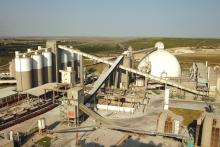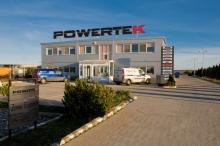
The 2009 downturn hit Romania’s construction industry harder than any other in central Europe: it is likely to lead the recovery
Romania’s construction industry was hit harder than any other in central Europe by the 2009 downturn, but there are signs of optimism.
Just three or four years ago, Romania’s construction industry was doing well: cement use alone reached record levels in 2008 at 600kg per capita, or close to 13million tonnes.
But in the first nine months of 2009 cement sales dropped by 30%, and no exports were made that year at all.
The construction industry contracted by 15.1% following the steep growth figures of 33.6% and 26% in 2007 and 2008 respectively.
The overall economic deterioration coincided with an ongoing political crisis, which resulted in virtually no progress in infrastructure development, despite the substantial EU funds available.
In contrast to other countries in the region, in which civil engineering served to counterbalance the reduction in the number of new buildings, in Romania there was a sharp reduction of more than 12% in infrastructure construction.
According to the Association of Aggregate Producers in Romania (APPA), in 2010 the total production of aggregates in Romania was about 50million tonnes, with an average price of €7 per tonne. This production takes into account the geological variety of Romania, especially the geo-diversity of the Carpathian Mountains, and includes all types of aggregates, from andesite, basalt and limestone to sand and gravel.
In the last five years, major players such as Carpat (Heidelberg);
APPA believes that the decline in the industry over the last three years will be balanced by the major changes currently in development, particularly the projects at European Pan Corridor IV (Dresden/Nuremberg, Prague, Vienna, Bratislava, Gyor, Budapest, Arad, Bucharest, Constana, Craiova, Sofia, Thessaloniki, Plovdiv, Istanbul).
Senior construction analyst Robert Obetkon stated in his development forecasts for 2011-2013: “After a steep, 37% cumulative contraction of the construction industry and a 25% decrease in employment levels in the sector in 2008-2010, construction in Romania stands a chance of posting a moderate growth in 2011. Contrary to what was expected, recovery will most likely start in the construction of buildings, first of all commercial property, and not in the civil engineering segment. This is due to the ongoing problems with financing major road construction and power infrastructure projects, which, as a result, are put on hold or their completion is delayed.”
KEY MOVES
Moves from several key players in the industry reflect optimism. Holcim Romania for example is apparently planning to invest €28million in its Alesd cement factory over the next two years. The work is part of an ongoing strategy of investment that has seen the company spend over €700million in Romanian facilities in the last 14 years.
In Romania,
The group operates three cement plants at Bicaz, in the north-east of the country; Deva, 400km north-west of Bucharest, and Fieni, within the vicinity of the capital Bucharest.
All HeidelbergCement cement activities in Romania are managed by
The aggregates division of HeidelbergCement in Romania, Carpat Agregate, operates 14 plants in the south-central part of the country, with a strong focus on the Bucharest market.
The company says it is the market leader in the production of aggregates, focused on products related to cement business. HeidelbergCement’s ready-mixed concrete activities in Romania began in 1998, and Carpat Beton, the holding company, operates 18 ready-mixed concrete plants, located in Bucharest (three), Timisoara, Ploiesti, Iasi, Brasov, Pitesti, Bacau, Oradea, Suceava, Craiova, Constanta, Targu-Mures and Cluj.
“Through a combination of the latest technology, competitive production technique and excellent logistics, Carpat Beton is one of the most important ready-mixed concrete producers in the Romanian market,” says HeidelbergCement.
And as the industry is driven forward by EU subsidies and public works tenders, it is an ideal situation for recently-appointed
APPA says that while things are looking rosier, there are still significant challenges currently and for the near future. These concern legislation gaps (especially related to landowner seep in licensed perimeters, and the level of royalties for mining licences and permits) and illegal extraction.








